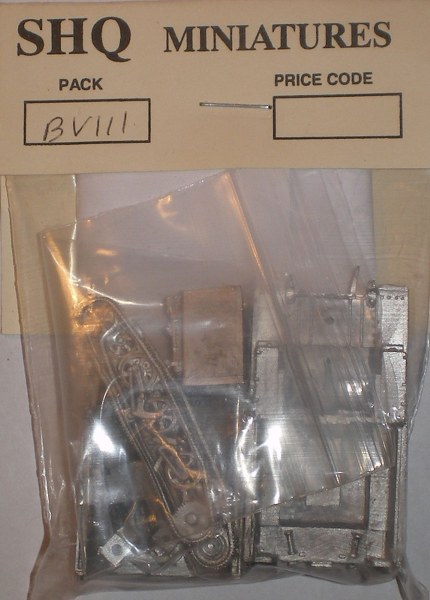
Box Art Dragon Light Tractor Mk.III
 Box Art Dragon Light Tractor Mk.III |
| DBTyp | Modell | |
| Kithersteller | SHQ | |
| Material | Metall | |
| Herstellerland | GB | Übergeordnete Kategorie: Europa |
| Betreiberland | GB | Übergeordnete Kategorie: Europa |
| Bauepoche | 0 (ungebaut) | |
| Themen | PzFzg Schlepper | (Bodengerät:) Fahrzeuge Übergeordnete Kategorie: Fahrzeug, Bodengerät, Arbeitsmaschine |
| Betriebsaera | Interwar | |
| Scale | 1/76 | |
| TextDE | After 1918, with the tank's success in overcoming bad terrain in mind, the British Army looked at tracked towing vehicles for artillery, and in 1922, the Royal Carriage Department at Woolwich Arsenal built the first Dragon. It used a suspension and track unit based on the current Vickers medium tank, could carry 10 men in addition to the driver and towed an 18pdr field gun and limber at 12 mph. This was soon replaced by the MkII with a more powerful engine, and then supplemented by the MkIII with gear ratios changed to permit towing medium guns of 5in and 6in calibre. However, in 1936 a policy decision was made to revert to wheeled vehicles for artillery towing, and so the Dragon was a dead-end development. (110) A variant of the Vickers 6-ton was the cargo vehicle Dragon Medium Mk. IV. Some were exported, many more converted from std tanks and exported. The Dragon Mk III derived its name from its purpose. Designed as an artillery tractor the 'Drag-gun' was used by the BEF in France and Belgium in 1940. Looking very like a Universal Carrier, the Dragon was used to tow smaller artillery pieces like the 3.7inch howitzer. Later Dragons such as the MK IV were used for larger guns. Following the retreat to Dunkirk in 1940 much of the BEF's Dragons were abandonded or destroyed in France. The Mk III was used mainly between 1939 and 1941.(111) | |
| BaseVehicle | Bodengerät | |
| lime: | Hervorragende Quelle, kaum Fehler |
| green: | Sehr gute Quelle, kaum Fehler |
| schwarz oder blau: | Qualität der Quelle noch nicht angegeben |
| orange: | Gute Quelle, einige Fehler |
| red: | Quelle enthält mglw. einige korrekte Angaben, ist in jedem Fall einzeln zu prüfen |